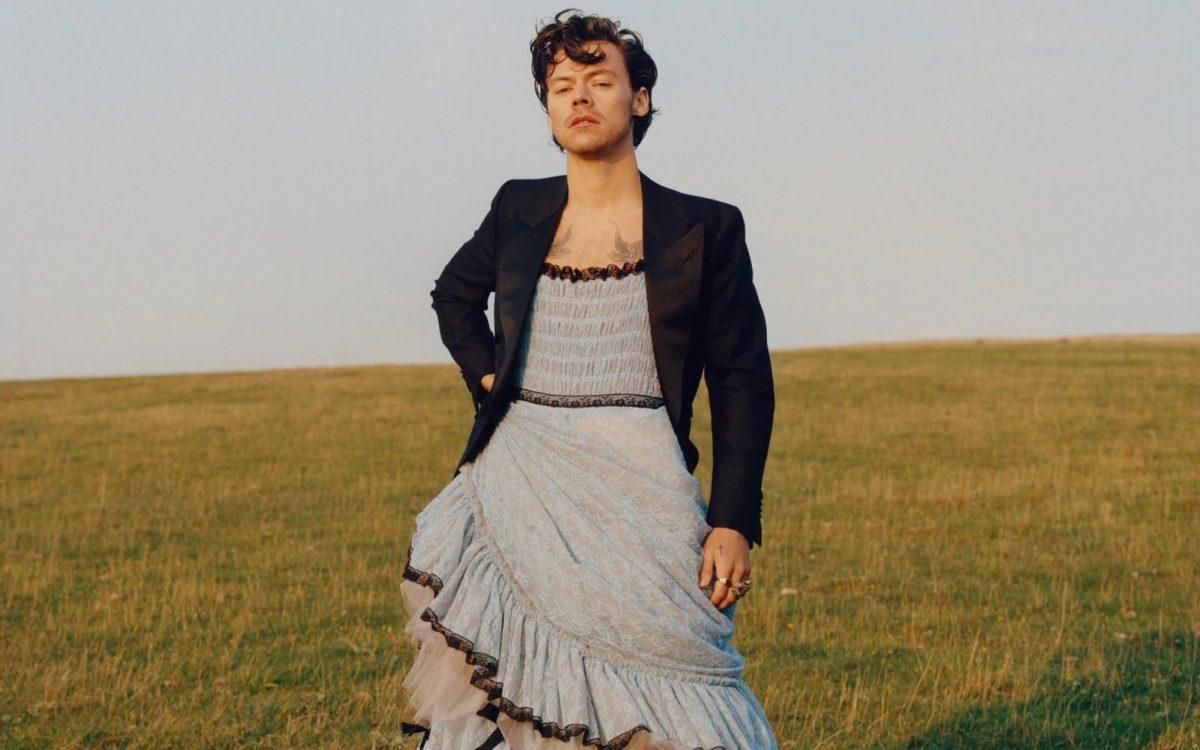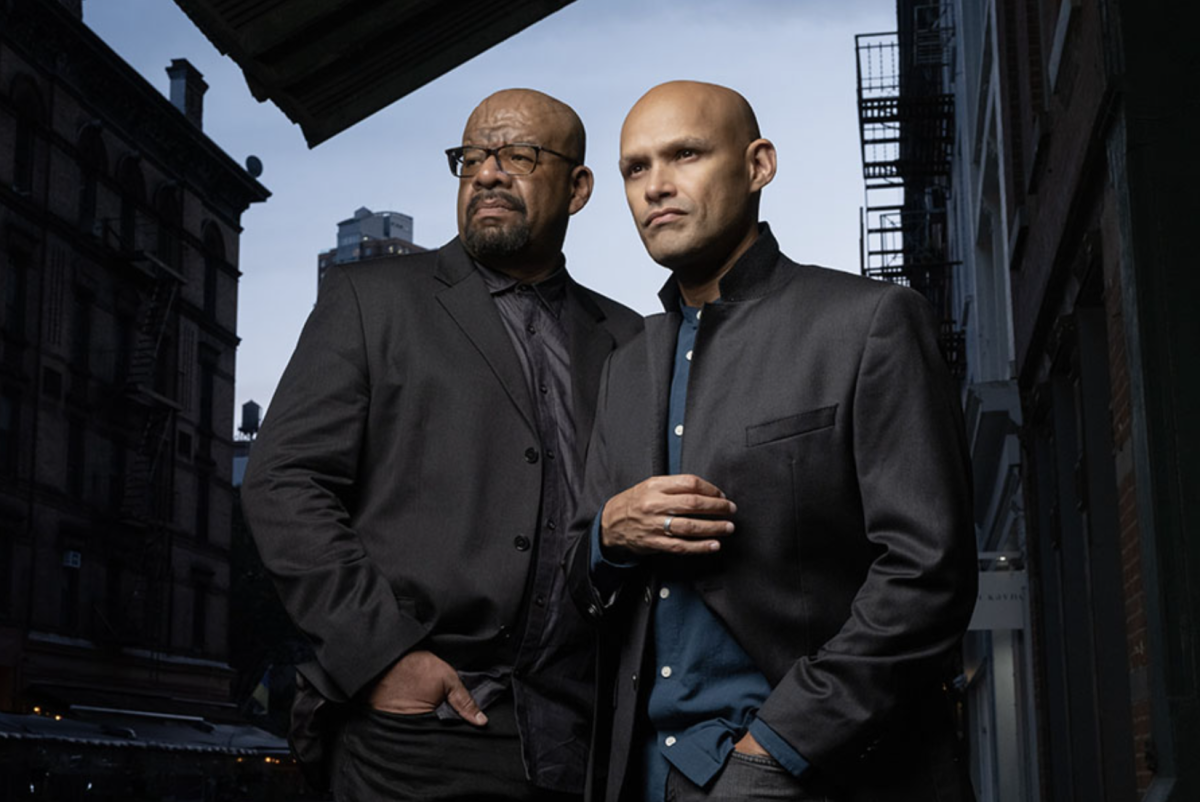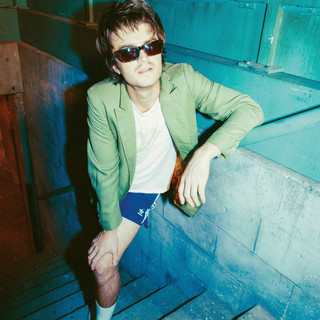I often struggle to verbalize why I gladly devote hours to sifting through articles on Repeller, Vogue, In the Frow or The Sartorialist. Last month, Harry Styles made that task a little bit easier. His historic cover shoot with Vogue proved just what clothing can do. When done incorrectly, the artform is superficial, elitist and emphatically materialistic. But when done right, fashion is a dream.
Dressed in kilts and lace and hoop skirts while prancing about an English hillside, Styles embodied that dream. The photoshoot actualized the most enchanting facets of fashion. In one photo, “Looking Fly,” Styles jumps up and down on a blue trampoline, arrayed in a black blazer and kilt by Comme des Garçons. In another, “Where He’s From,” he stands before a terracotta-colored backdrop in custom yellow corduroy pants by Emily Adams Bode, who covered the trousers in hand-painted emblems. Designer Harris Reed dazzles us with an image titled “Mister of the Robes.” In it, Styles wears a Victorian crinoline, paired unexpectedly with a 1980s-style suit jacket and wide-legged pants. And the cover? This one I like best. Styles is wearing a lace gown and suit jacket by Gucci. With his many rings on display, the musician blows up a sky-blue balloon.
Not only does the cover explicitly disregard gender-normative fashion — thank God, we have had enough of that — the December issue marks a first for the magazine. Styles is the first man to ever appear solo on the cover of Vogue since the magazine’s launch in 1892. The spread pushes the industry toward an ungendered horizon where clothes no longer indicate one’s preferred pronouns, but rather their tastes, their sensibilities, their ability to let go of social constructs and just play.
This is why I was disheartened to see how some public figures accosted Styles. Members of the conservative limelight were quick to take up arms against the former One Direction member when Vogue posted its cover in early November.
In response to the shoot, Candace Owens tweeted, “Bring back manly men.” She continued her spiel with, “There is no society that can survive without strong men. The East knows this. In the West, the steady feminization of our men at the same time that Marxism is being taught to our children is not a coincidence. It is an outright attack.”
Ben Shapiro also tweeted his disdain for the cover photo, writing, “Pretending that men dressing up like women does not feminize men is ridiculous, particularly coming from the same people who are celebrating Styles BECAUSE he is feminizing masculinity.”
Many Hollywood stars and fans came to the artist’s defense. Jameela Jamil tweeted, “Manly is whatever you want it to be.” Olivia Wilde, in response to Owens, wrote, “You’re pathetic.”
But not everyone is impressed by Vogue’s attempt at inclusion, with many arguing that the photoshoot is a feeble step toward progress. Encapsulating this sentiment, The Daily Beast published the headline, “Harry Styles’ Vogue cover may be historic, but it isn’t radical.”
Not only do I see this point, I stand by it. Depicting a cisgender man in a Gucci gown works to detoxify and challenge the conventions of masculinity. Still, the cover shoot fails to emblemize the full breadth of progress. Month after month, Vogue has the platform to celebrate the aesthetic voices of the systemically and societally disenfranchised. If Vogue hoped to explore gender fluidity in their December issue, they could have chosen to highlight a trans, nonbinary and/or gender nonconforming individual of color. Alok Vaid-Menon, an author and performance artist who is gender nonconforming, explained their stance in an Instagram post:
“Am I happy to see Harry be celebrated for openly flouting gendered fashion norms? Yes. Do trans femmes of color receive praise for doing the same thing every day? No,” they wrote. “Do I think this is a sign of progress of society’s evolution away from binary gender? Yes. Do I think that white men should be upheld as the face of gender-neutral fashion? No.”
Of course, I would be remiss not to address the Prada-clad elephant in the room. By and large, Vogue Magazine and its parent company Condé Nast are not emblems of progress. Far from it. For the uninitiated, Condé Nast became embroiled in a string of controversies over the summer. Matt Duckor, the former vice president of the global media company who once oversaw video content for Bon Appétit, Architectural Digest and Vogue, resigned in June after a culture of racism surfaced at Bon Appétit, which Duckor explicitly partook in. Duckor was not the only executive on the chopping block. Adam Rapoport infamously stepped down as editor-in-chief of Bon Appétit after a photo circulated of him dressed as a Puerto Rican man for Halloween. This atmosphere of racism, elitism and exclusion was not limited to Bon Appétit. Perhaps unsurprisingly, these qualities are endemic to several Condé Nast publications including, you guessed it, Vogue.
For many years, Vogue presented a very narrow image of fashion. It took American Vogue over 80 years to feature its first Black cover star, Beverly Johnson, in 1974. Anna Wintour, Vogue’s editor-in-chief and the artistic director of Condé Nast, recently professed her history of “hurtful and intolerant” creative decisions that have stifled diversity at the publisher and its magazines.
While the magazine has taken several steps toward inclusion in recent years, these efforts are painfully overdue. At face value, the 2020 December issue of Vogue is a visual playground. It showcases the spirited, playful potential of clothes. Simultaneously, it confronts how the fashion industry too often typifies manhood. Still, if Vogue wanted to challenge conventions and make a statement on gender-fluidity, I cannot help but ask: Why him? Harry Styles is an icon, yes. But there are plenty more icons-in-waiting to choose from, not all of whom are cisgender white men.
With any luck, Vogue’s December issue is just the starting point, and fashion will progress to a point where cover shoots like this no longer make headlines. Perhaps by then, people who subvert expectations of gender will be mainstays of publications like Vogue. I certainly hope so.





Ks | Feb 25, 2021 at 3:23 am
Oh my god. The profile was meant to be about Harry Styles full stop. It wasn’t about ‘gender fluidity’ so they were never going to choose someone else! It just so happens that Harry Styles dresses however the hell he wants and that was reflected in the styling for the shoot!